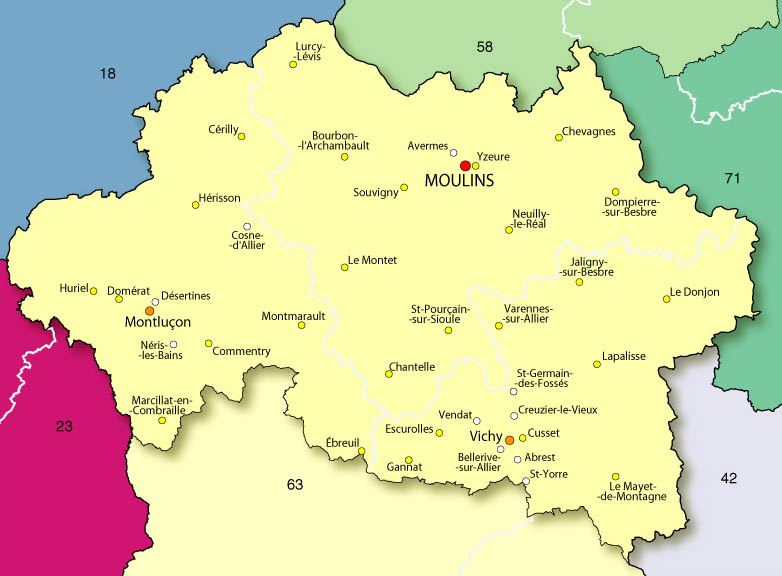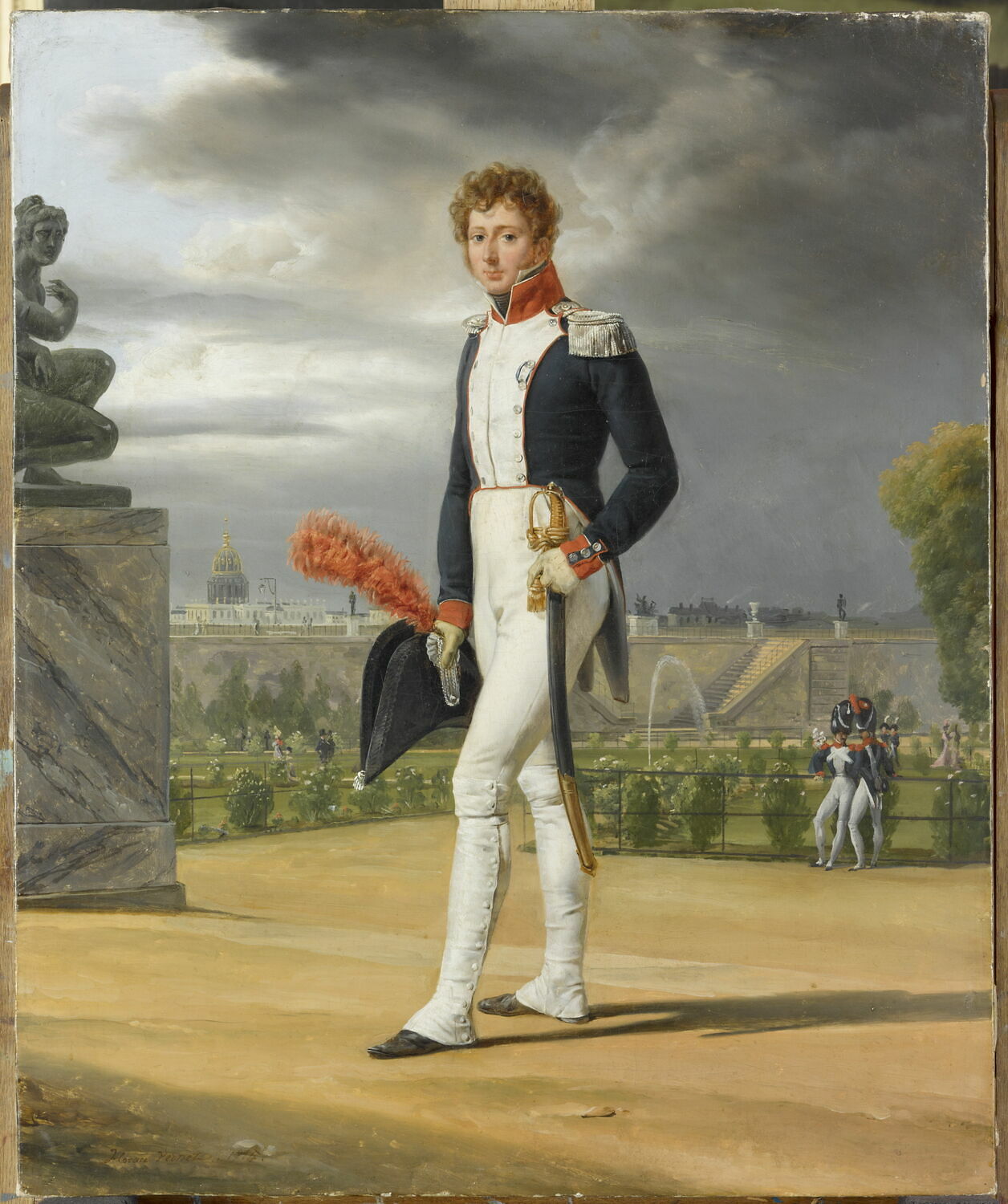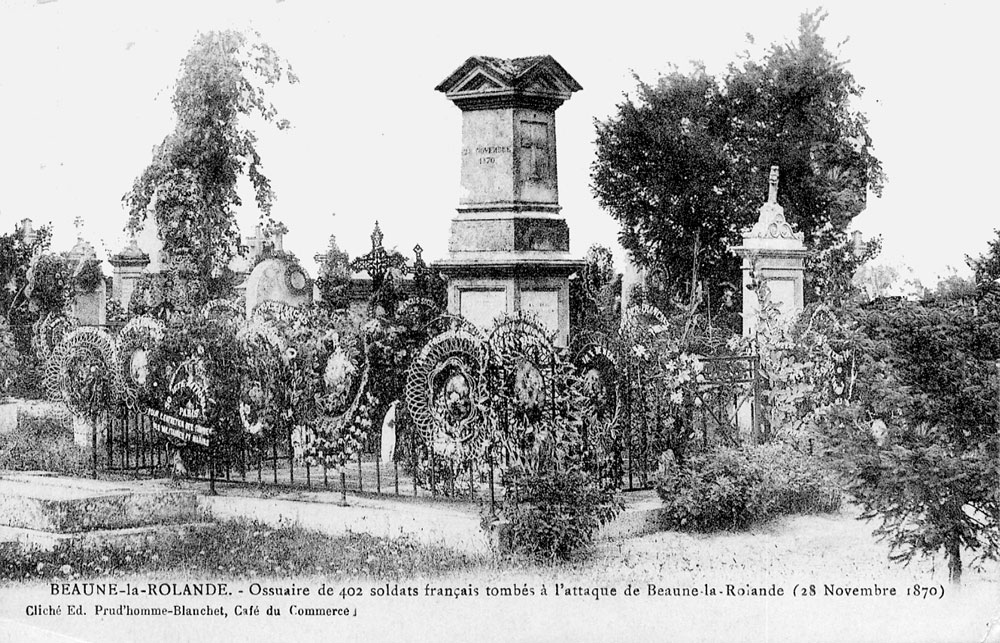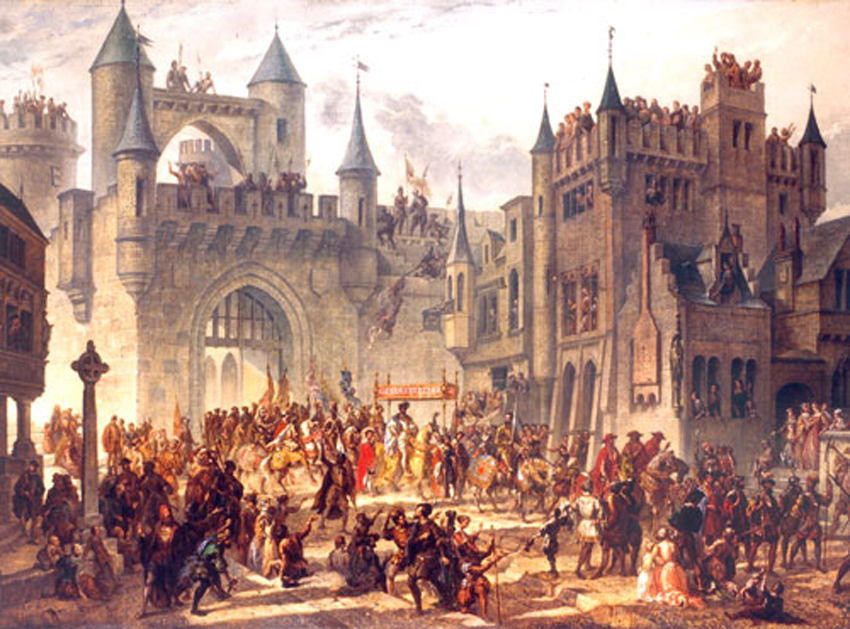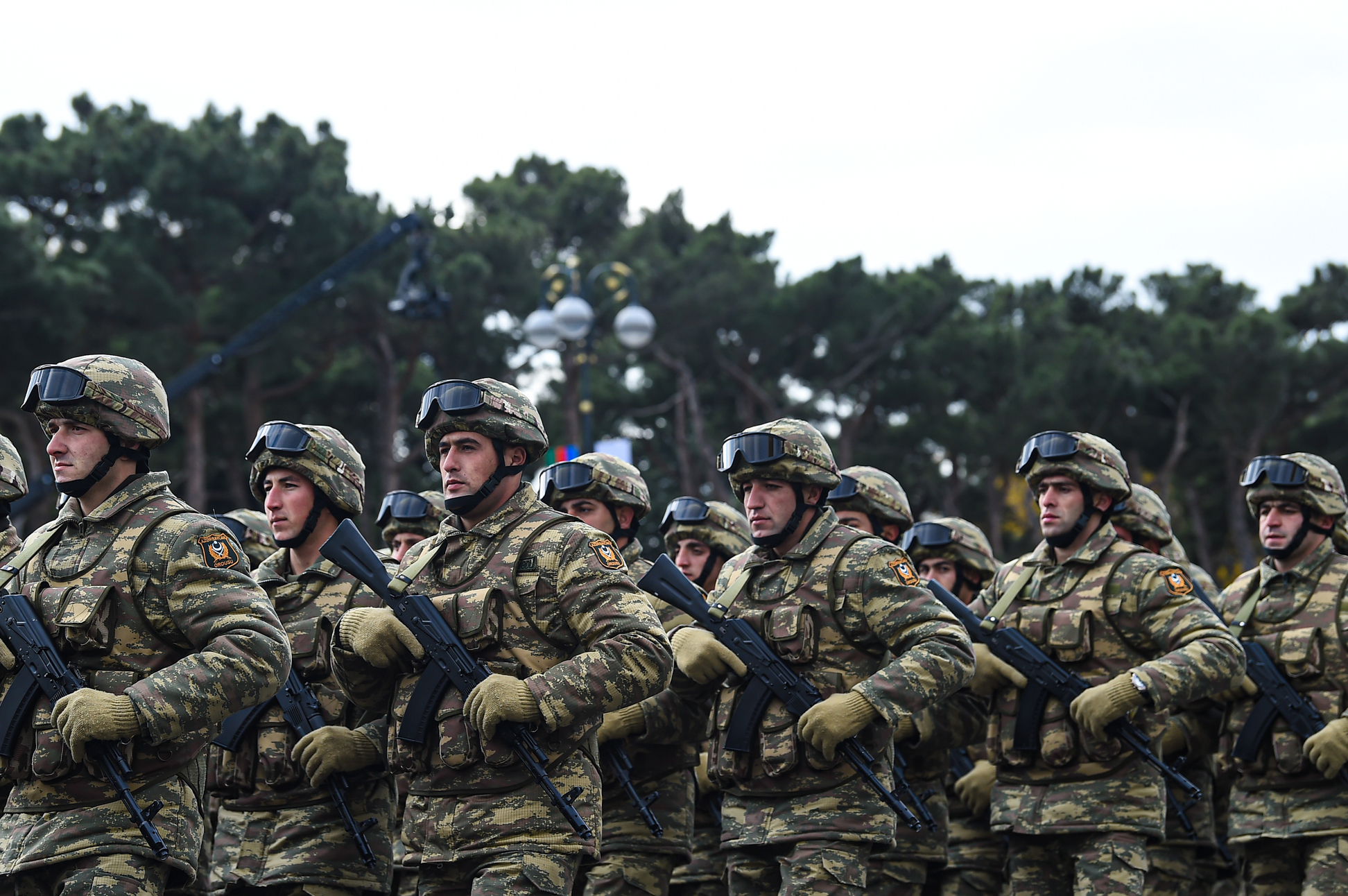|
Louis D'Aurelle De Paladines
Louis Jean-Baptiste d'Aurelle de Paladines (; 9 January 1804 – 17 December 1877) was a French general. Life He was born at Le Malzieu-Ville, Lozère, educated at the Prytanée National Militaire and Ecole Spéciale Militaire de Saint-Cyr, St Cyr, and entered the army as sub-lieutenant of foot in 1824. He served with distinction in Algeria between 1841 and 1848, becoming lieutenant-colonel and an officer of the Legion of Honour; took part in the Roman campaigns of 1848 and 1849, and was made colonel. He served as general of brigade throughout the Crimean War of 1854-56, being promoted general of division and commander of the Legion of Honour. During the campaign in Lombardy in 1859 he commanded at Marseille, and superintended the despatch of men and stores to the seat of war, and for his services he was made a grand officer of the Legion of Honour. Placed on the reserve list in 1869, he was recalled to the Marseille command on the outbreak of the Franco-German War of 1870-71 ... [...More Info...] [...Related Items...] OR: [Wikipedia] [Google] [Baidu] |
Le Malzieu-Ville
Le Malzieu-Ville (; ) is a Communes of France, commune in the Lozère Departments of France, department in southern France. It is a member of Les Plus Beaux Villages de France (The Most Beautiful Villages of France) Association. Notable features include medieval ramparts, a church, a tourist office, and a leisure park along the river Truyère. Notable people * Vital de Lestang (1588-1621), Bishop of Carcassonne * Louis Bertrand Pierre Brun de Villeret (1773-1845), General, born and died at Le Malzieu * Louis d'Aurelle de Paladines (1804-1877), General, born at Le Malzieu See also *Communes of the Lozère department References [...More Info...] [...Related Items...] OR: [Wikipedia] [Google] [Baidu] |
Lombardy
The Lombardy Region (; ) is an administrative regions of Italy, region of Italy that covers ; it is located in northern Italy and has a population of about 10 million people, constituting more than one-sixth of Italy's population. Lombardy is located between the Alps mountain range and tributaries of the river Po (river), Po, and includes Milan, its capital, the largest metropolitan area in the country, and among the largest in the EU. Its territory is divided into 1,502 ''comuni'' (the region with the largest number of ''comuni'' in the entire national territory), distributed among twelve administrative subdivisions (eleven Provinces of Italy, provinces plus the Metropolitan City of Milan). The region ranks first in Italy in terms of population, population density, and number of local authorities, while it is fourth in terms of surface area, after Sicily, Piedmont, and Sardinia. It is the second-most populous Region (Europe), region of the European Union (EU), and the List of ... [...More Info...] [...Related Items...] OR: [Wikipedia] [Google] [Baidu] |
Allier
Allier ( , , ; ) is a Departments of France, department in the Auvergne-Rhône-Alpes Regions of France, region that borders Cher (department), Cher to the west, Nièvre to the north, Saône-et-Loire and Loire (department), Loire to the east, Puy-de-Dôme to the south, and Creuse to the south-west. Named after the river Allier (river), Allier, it had a population of 334,872 in 2021.Populations légales 2021: 03 Allier INSEE (in French) Moulins, Allier, Moulins is the Prefectures in France, prefecture; Montluçon and Vichy are the Subprefectures in France, subprefectures. Its Institut national de la statistique et des études économiques (France), INSEE and Postal codes in France, post code is 03. Before 2018, the inhabitants of the department did not have a demonym. The inhabitants of the depar ... [...More Info...] [...Related Items...] OR: [Wikipedia] [Google] [Baidu] |
National Assembly (1871)
The National Assembly (French language, French: ''Assemblée nationale'') was a French Unicameralism, unicameral Legislature, legislative body 1871 French legislative election, elected on 8 February 1871 in the wake of the Armistice of Versailles signed on 26 January 1871 at the end of the Franco-Prussian War. It sat in Bordeaux until 20 March 1871, when it moved to the Palace of Versailles near Paris. The cabinets which issued from it governed France from 19 February 1871 to 31 December 1875. See also * Commune of Paris * French constitutional laws of 1875 Sources * Bernard Noël, ''Dictionnaire de la Commune'', Flammarion, collection Champs, 1978 * Jean-Pierre Azéma et Michel Winock, ''Naissance et mort. La Troisième République'', Collection Pluriel, 1978 * Antoine Olivesi et André Nouschi, ''La France de 1848 à 1914'', Nathan Université, collection fac Histoire, 1997. Aftermath of the Franco-Prussian War 1870s in France 1870s in politics ... [...More Info...] [...Related Items...] OR: [Wikipedia] [Google] [Baidu] |
National Guard (France)
The National Guard () is a French military, gendarmerie, and police reserve force, active in its current form since 2016 but originally founded in 1789 during the French Revolution. It was founded as separate from the French Army and existed both for policing and as a military reserve. However, in its original stages from 1792 to 1795, the National Guard was perceived as revolutionary and the lower ranks were identified with sans-culottes. It experienced a period of official dissolution from 1827 to 1830 but was reestablished. Soon after the Franco-Prussian War of 1870–71, the National Guard in Paris again became viewed as dangerously revolutionary, which contributed to its dissolution in 1871. In 2016, France announced the reestablishment of the National Guard for the second time, in response to a series of terrorist attacks in the country. Creation The raising of a "Bourgeois Guard" (''"garde bourgeoise"'') for Paris was discussed by the National Assembly on 11 Jul ... [...More Info...] [...Related Items...] OR: [Wikipedia] [Google] [Baidu] |
Sologne
Sologne (; ) is a natural region in Centre-Val de Loire, France, extending over portions of the departements of Loiret, Loir-et-Cher and Cher. Its area is about . To its north is the river Loire, to its south the river Cher, while the districts of Sancerre and Berry are to its east. Its inhabitants are known as the ''Solognots'' (masculine) and ''Solognotes'' (feminine). Its name is thought to derive either from the Latin ''sœcalonia'' (" rye country") or ''sabulonia'' ("sandy country"). Geography The Sologne is watered by the Cosson and the Beuvron, tributaries of the Loire, and the Sauldre, a tributary of the Cher, all three having a west-south-westerly direction. The pools and marshes which are characteristic of the region are due to the impermeability of its soil, which is a mixture of sand and clay. The main towns of Sologne are: * Orléans (the most southern part of the city (La Source) and the university have been built in the woods of Sologne) * Romorantin-La ... [...More Info...] [...Related Items...] OR: [Wikipedia] [Google] [Baidu] |
Battle Of Beaune-la-Rolande
The Battle of Beaune-la-Rolande on 28 November 1870 took place during the Franco-Prussian War, which was won by Prussia. In an attempt to relieve the Siege of Paris, French General Crouzat's XX Corps launched an attack against three Prussian brigades resting in Beaune-la-Rolande. These brigades were from the Prussian X Corps which was detailed to guard the flanks and rear of the force besieging Paris and provide early warning of any French counter-attacks. The French committed a force of 60,000 men, largely conscripts of the Garde Mobile, and 140 guns against the Prussians' 9,000 men and 70 guns, mostly drawn from regular troops, although military historian Gaston Bodart estimated their strength at 40,000 men and 174 guns. Despite the superiority of numbers the French attack failed to take the village and was ultimately forced to retreat by Prussian reinforcements. Prussian losses amounted to 817 soldiers and 37 officers with the French losing between 4,000 and 8,000 men. The ... [...More Info...] [...Related Items...] OR: [Wikipedia] [Google] [Baidu] |
Metz
Metz ( , , , then ) is a city in northeast France located at the confluence of the Moselle (river), Moselle and the Seille (Moselle), Seille rivers. Metz is the Prefectures in France, prefecture of the Moselle (department), Moselle Departments of France, department and the seat of the parliament of the Grand Est Regions of France, region. Located near the Tri-border area, tripoint along the junction of France, Germany and Luxembourg,Says J.M. (2010) La Moselle, une rivière européenne. Eds. Serpenoise. the city forms a central part of the European Greater Region and the SaarLorLux euroregion. Metz has a rich 3,000-year history,Bour R. (2007) Histoire de Metz, nouvelle édition. Eds. Serpenoise. having variously been a Celts, Celtic ''oppidum'', an important Gallo-Roman city,Vigneron B. (1986) Metz antique: Divodurum Mediomatricorum. Eds. Maisonneuve. the Merovingian capital of Austrasia,Huguenin A. (2011) Histoire du royaume mérovingien d'Austrasie. Eds. des Paraiges. p ... [...More Info...] [...Related Items...] OR: [Wikipedia] [Google] [Baidu] |
Battle Of Coulmiers
The Battle of Coulmiers was fought on 9 November 1870 between French and Bavarian forces during the Franco-Prussian War, ending in French victory. The struggle The Army of the Loire, under General D'Aurelle de Paladines, surprised a Bavarian army under Ludwig Freiherr von und zu der Tann-Rathsamhausen at the village of Coulmiers, west of Orléans. The French artillery detachment shelled the Bavarian camp with percussion-fused shells, causing panic in the camp and causing the Bavarian garrison to retreat in disorder during a direct bayonet charge by French infantry. Forcing the Bavarian forces into retreating from the battlefield led to one of the very few French victories in the war. Aftermath The news of Coulmiers was relayed to besieged Paris and caused great excitement in the city, prompting the Government of National Defense within the city to launch "the Great Sortie" against the Prussian siege lines around the city. At the same time, the Army of the Loire stopped ... [...More Info...] [...Related Items...] OR: [Wikipedia] [Google] [Baidu] |
Ludwig Freiherr Von Und Zu Der Tann-Rathsamhausen
Ludwig Samson Heinrich Arthur Freiherr von und zu der Tann-Rathsamhausen (18 June 181526 April 1881) was a Bavarian general. Early life Born in Darmstadt, on the day of Waterloo, Ludwig was a descendant from the old family of von der Tann, which had branches in Bavaria, the Alsace and the Rhine provinces, and attached his mother's name (she being the daughter of an Alsatian nobleman, Freiherr von Rathsamhausen) to his father's in 1868 by license of the king of Bavaria. Ludwig I, the second king of Bavaria, stood sponsor for the child, who received his name and also "Arthur", in honour of Arthur Wellesley, 1st Duke of Wellington. He received a careful education, and in 1827 became a page at the Bavarian court, where a great future was predicted for him. Military career Von der Tann entered the military under the artillery branch in 1833, and was after some years placed on the general staff. He attended the manoeuvres of the Austrian army in Italy under Field Marshal Radetzky an ... [...More Info...] [...Related Items...] OR: [Wikipedia] [Google] [Baidu] |
Army Of The Loire
An army, ground force or land force is an armed force that fights primarily on land. In the broadest sense, it is the land-based military branch, service branch or armed service of a nation or country. It may also include aviation assets by possessing an army aviation component. Within a national military force, the word army may also mean a field army. Definition In some countries, such as France and China, the term "army", especially in its plural form "armies", has the broader meaning of armed forces as a whole, while retaining the colloquial sense of land forces. To differentiate the colloquial army from the formal concept of military force, the term is qualified, for example in France the land force is called , meaning Land Army, and the air and space force is called , meaning Air and Space Army. The naval force, although not using the term "army", is also included in the broad sense of the term "armies" — thus the French Navy is an integral component of the collective ... [...More Info...] [...Related Items...] OR: [Wikipedia] [Google] [Baidu] |
Government Of National Defense
The Government of National Defense () was the first government of the Third Republic of France from 4 September 1870 to 13 February 1871 during the Franco-Prussian War. It was formed after the proclamation of the Republic in Paris on 4 September, which in turn followed the surrender and capture of Emperor Napoleon III by the Prussians at the Battle of Sedan. The government, headed by General Louis Jules Trochu, was under Prussian siege in Paris. Breakouts were attempted twice, but met with disaster and rising dissatisfaction of the public. In late January the government, having further enraged the population of Paris by crushing a revolutionary uprising, surrendered to the Prussians. Two weeks later, it was replaced by the new government of Adolphe Thiers, which soon passed a variety of financial laws in an attempt to pay reparations and thus oblige the Prussians to leave France, leading to the outbreak of revolutions in French cities, and the ultimate creation of the Paris Com ... [...More Info...] [...Related Items...] OR: [Wikipedia] [Google] [Baidu] |

